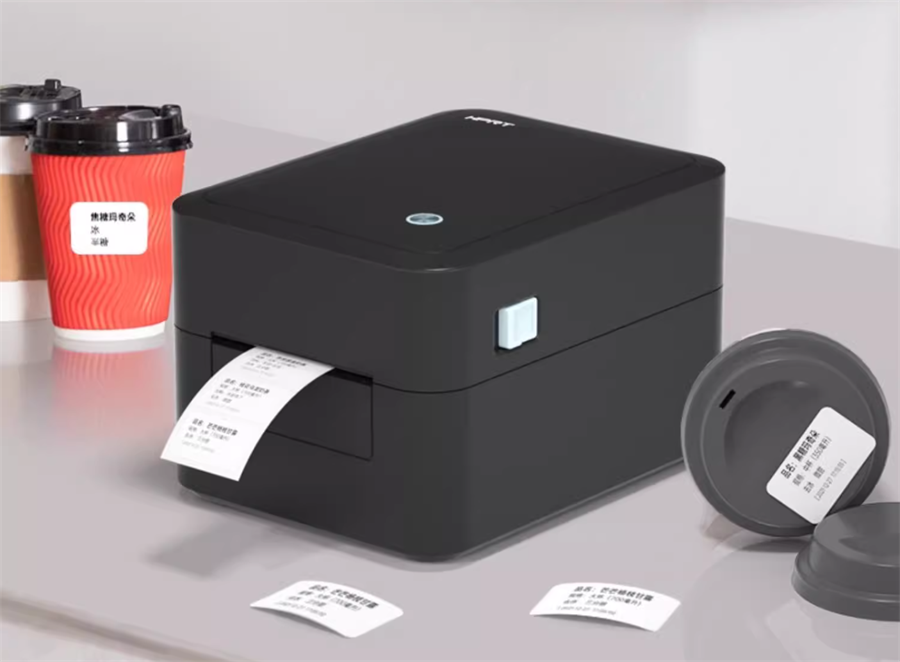Selecting the right equipment for your business is a crucial decision. When it comes to your shipping operations, you need a printer that is accurate, dependable, and easy to integrate with your current setup. A delay or error in shipping can impact customer satisfaction and your bottom line. Understanding this, we want to help you find a solution that not only meets but exceeds your expectations.
This guide is designed to walk you through the key considerations for choosing a shipping label printer. We’ll explore the benefits of thermal printing technology, what features to look for, and how the right printer can scale with your business demands. Our goal is to provide you with the information you need to make a confident and informed decision, ensuring your packages get to their destinations smoothly and efficiently.
An efficient shipping process is the backbone of any business that sends out physical goods. From the moment an order is placed to when it arrives at the customer’s door, every step needs to be seamless. Inaccurate or hard-to-scan labels can lead to frustrating delays, lost packages, and unhappy customers.
This is where a high-quality shipping label printer becomes an invaluable asset. Investing in the right equipment can prevent these common pitfalls, helping you maintain a professional and reliable service. A dedicated printer ensures every label is clear, scannable, and durable, which is essential for modern logistics.
When you start looking at Shipping Label Printers, you’ll notice most are thermal printers. This technology is favoured in logistics for several important reasons.
Thermal printers use heat to create an image on the label. There are two types: direct thermal and thermal transfer.
- Direct thermal printers use chemically treated, heat-sensitive paper that blackens when it passes under the thermal printhead. This method is simple and doesn’t require ink, toner, or a ribbon.
- Thermal transfer printers use a heated printhead to transfer solid ink from a ribbon onto the label, creating a permanent, high-quality image.
For most shipping applications, direct thermal printers are a popular choice. The primary benefit is their cost-effectiveness. By eliminating the need for ink cartridges or ribbons, you reduce ongoing operational costs. This can lead to significant savings, especially for businesses with high shipping volumes.
Furthermore, thermal printers are known for their consistency and speed. They can produce clear, scannable barcodes and addresses at a rapid pace, keeping your fulfilment line moving without interruption.
Choosing the right printer involves looking at a few key features that will directly impact your daily operations. Here’s what we recommend you consider:
Your printer must produce high-resolution labels that are easy to scan. Look for a printer with a minimum of 203 dots per inch (dpi), which is standard for creating clear barcodes and text. For businesses that need to print very small barcodes or detailed graphics, a higher dpi might be necessary.
Speed is another critical factor, especially for high-volume fulfilment. Printer speed is typically measured in inches per second (IPS). A printer that can handle high-speed output ensures your operations remain efficient, even during peak seasons.
Your shipping station is a busy environment, and your equipment needs to withstand heavy use. Look for printers with a robust design built for commercial settings. Brands like Sato are known for their durability and are engineered to perform consistently under demanding conditions. The reliability of your printer is directly tied to the reliability of your shipping operations.
A new piece of equipment should fit seamlessly into your existing workflow. Check for versatile connectivity options, such as USB, Ethernet, and RS-232. These options make it easier to integrate the printer with your shipping software, warehouse management systems, and other business platforms. A simple integration process means less downtime and a smoother transition.
As your business grows, your shipping needs will change. It’s wise to choose a printer that can scale with you. Consider a model that can handle higher volumes and is flexible enough to adapt to future needs. For example, the Sato CL4NX-Plus Thermal Printer is a great option for businesses planning for growth, as it’s built for industrial-level performance. For smaller operations or those just starting, the Sato WS4 Thermal Direct Printer offers excellent performance in a more compact and affordable package.
At Price Guns And Labels, we have carefully selected a range of premium quality thermal printers designed to meet the diverse needs of businesses across Australia. Here are two of our top recommendations:
For small to medium-sized businesses, the Sato WS4 Thermal Direct Printer is an exceptional choice. It offers a perfect balance of performance and affordability. It’s compact enough for smaller workspaces but powerful enough to handle a steady volume of shipments. With its user-friendly design and reliable output, it’s an ideal starting point for businesses looking to professionalise their shipping process.
For larger operations or businesses experiencing rapid growth, the Sato CL4NX-Plus Thermal Printer is an industrial powerhouse. It is built for high-volume, high-speed fulfilment, delivering fast and precise performance that keeps your operations moving. With advanced features and rugged construction, this printer is an investment in the long-term efficiency and scalability of your business.
Choosing the right shipping label printer is a decision that will have a lasting impact on your business’s efficiency and customer satisfaction. By focusing on quality, reliability, and ease of use, you can streamline your shipping process and ensure your packages arrive safely and on time.
We understand that every business has unique needs, and we are here to help guide you to the perfect solution. If you have any questions or need support in making your choice, please don’t hesitate to reach out to our team.
Explore our collection of Shipping Label Printers today and take the next step towards optimising your fulfilment process.
